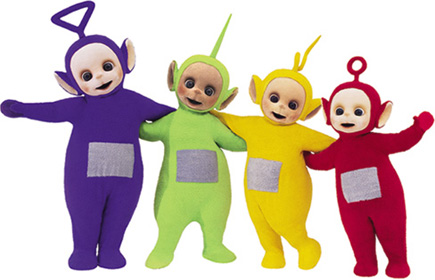Frenglish.
First, let me share with you an observation that will help understand why my friend was fooled by his own language... Due to the medieval influence of William The Conqueror and his fellow Normans, Latin has infiltrated English. As a result, complex words in both French and English share the same roots, and often the same orthography. And the longer, the more complex a word is. We thus observed (and that has to be verified) that 7-and-above-letter word in French tends to have its equivalent on this side of the Channel. So sometimes, when you are short of a word, you can always try your luck and pronounce the French word with some kind of an English accent, and it might well do the trick. The reciprocal approach should work too. So next time you go to Paris and struggle, have a go... Just don't think too complex, after all not all the bar tenders have a PhD in Literature...
Now, if this trick does not work, you can also try literal translation. However, this is a last chance attempt, because with our flourished language, the translation rarely matches. You see me coming, this is exactly what happened to my friend!
International pub talks
As a keen water sport lover, he wanted to explain to a co-worker that he was looking for a place to kitesurf. The only trouble was that he could not remember how to say "kite" in English, which was quite critical in his situation as you can imagine. Kite in French is not seven letter long, damn it, option 1 was down, and after having tried his best Marcel Marceau's imitation, he decided to translate the French word literally.
Kite in French is "Cerf-Volant", literally "Flying-Deer"... You can certainly picture yourself, in a pub, with someone asserting that he wants to go surfing with a flying deer. Well, unless you are talking to a round-bellied guy dressed in red and with a long white beard, it is very unlikely that you can figure out what the guy is talking about. And neither did his colleague, until my friend finally recalled the proper word.

Translating your own language
Such an experience is not only funny, it is also enriching. It forces you to challenge your own language. Why on Earth are we calling a Kite a flying-deer in French? Was that because they were initially built with deer skins? Well, before the (mobile) Internet-era all this would have led to endless speculations, but with a 3G-enabled device, a few clicks on wikipedia and you have the answer on the go. And it was quite interesting an answer...
In France too, we have foreign language influences in our vocabulary. We even have influences from since-disappeared languages such as the Occitan Language, once spoken in the southern part of France. In this language, kites were called sèrp-volanta, referring to flying-snakes (which makes more sense visually, especially when you have the original Chinese models in mind). But the words sèrp (snake) and cerf (deer) with its silent "f" sound very similar, so a mistake was made when it was "translated" into common French.
This is how I have learned that the deers are not really flying except on December 24th. Merry Christmas dear reader, and happy new year dear reindeer.





















